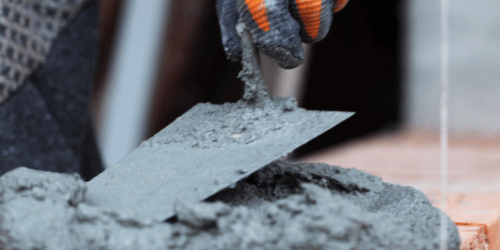Masonry, with its timeless appeal and durability, has been a staple in construction for centuries. Whether it’s the brick facade of your home, a charming garden wall, or a sturdy chimney, maintaining and repairing masonry structures is essential. In this comprehensive blog post, we’ll delve into the world of masonry repair, covering everything from common issues to expert advice. Let’s lay a solid foundation for understanding masonry repair and preserving the beauty of your home.
Masonry repair involves addressing structural issues, weathering, and wear and tear in brick, stone, and concrete structures. By understanding the signs of damage and implementing timely repairs, homeowners can extend the lifespan of their masonry elements.
Identifying Common Masonry Issues
Cracks and Mortar Deterioration
Cracks in masonry stem from settling, temperature changes, or construction flaws, each carrying specific implications. Understanding crack types aids in effective diagnosis and repair planning. Mortar deterioration, typical in aged structures, requires careful evaluation and repointing as necessary. Assessing mortar quality is pivotal for sustaining structural integrity and preventing further degradation. Identifying weakened areas ensures timely maintenance, preserving the stability and longevity of masonry constructions.
Efflorescence and Stains
Efflorescence, the white powdery substance on brickwork, results from salt deposits and requires removal to maintain aesthetics. Prevention strategies are essential to curb its recurrence and preserve the integrity of masonry surfaces. Additionally, stains such as rust or algae can tarnish masonry appearance, necessitating prompt removal. Effective stain removal techniques ensure a pristine finish, enhancing the visual appeal and longevity of masonry structures.
Spalling and Freeze-Thaw Damage
Spalling occurs when the surface of bricks or concrete flakes off, posing structural risks. Identifying causes and solutions for spalling is critical for maintaining structural integrity. Additionally, harsh winters can induce freeze-thaw damage, exacerbating spalling and compromising masonry durability. Understanding the impacts of freeze-thaw cycles enables proactive measures to prevent damage and ensure the longevity of masonry structures.
Masonry Repair Techniques
Repointing
Repointing involves removing deteriorated mortar and replacing it with fresh mortar to maintain masonry integrity. Essential tools and materials, including tuckpointing tools and mortar mix, facilitate the process. A step-by-step guide provides detailed instructions for effectively repointing masonry joints, ensuring structural stability and longevity.
Patching and Replacement
For minor cracks, patching compounds offer quick and effective solutions to restore structural integrity. These compounds are ideal for addressing small cracks and preventing further deterioration. When damaged bricks or stones require replacement, seamless techniques ensure structural cohesion and aesthetic consistency. Following precise steps ensures a seamless transition, maintaining the integrity and visual appeal of the masonry structure.
Waterproofing
Waterproofing is crucial for safeguarding masonry from moisture infiltration, which can cause deterioration and structural damage over time. Exploring various sealants and coatings provides options for effective waterproofing tailored to specific needs and environmental conditions. Implementing appropriate waterproofing measures ensures the longevity and durability of masonry structures, protecting them against the detrimental effects of moisture exposure.
Expert Tips and Case Studies
Hiring a Masonry Contractor
Choosing the right professional mason entails considering crucial factors such as experience, expertise, and reputation. Look for certifications and references to ensure quality workmanship. Skilled contractors conduct thorough project assessments to accurately evaluate repair needs, providing tailored solutions for optimal results. Collaborating with competent professionals ensures efficient and satisfactory masonry repairs, preserving the integrity and longevity of your structure.
Real-Life Masonry Repairs
Restoring a historic brick facade requires meticulous attention to detail and preservation techniques. Skilled masons carefully assess the condition of the bricks, identifying areas of deterioration and structural weakness. Using historical restoration methods and compatible materials, they meticulously repair damaged bricks while maintaining the facade’s architectural integrity. Specialized cleaning techniques may be employed to remove stains and debris without damaging the original surface.
Preventive Maintenance
Regular inspections play a crucial role in identifying potential issues early on, preventing extensive damage to masonry structures. By conducting thorough inspections periodically, homeowners can detect signs of deterioration or damage and address them promptly, thus avoiding costly repairs in the future. Additionally, implementing seasonal care practices ensures that masonry remains well-maintained throughout the year. Tips for maintaining masonry during different seasons may include cleaning and sealing in spring, checking for cracks and leaks in summer, clearing debris and preparing for colder weather in autumn, and protecting against frost and moisture during winter.
Masonry Maintenance and Preservation
Cleaning Techniques
Removing dirt and grime from masonry surfaces requires gentle cleaning methods to preserve aesthetics while effectively eliminating debris. Explore options such as gentle scrubbing with a soft-bristled brush or using mild detergent solutions to lift dirt without causing damage. Chemical cleaners can be used judiciously for stubborn stains or heavy buildup, but it’s essential to follow manufacturer instructions carefully to avoid surface damage. Understanding when and how to use chemical cleaners ensures thorough cleaning without compromising the integrity of the masonry surface.
Sealing and Coating
Sealing masonry surfaces is crucial to prevent water infiltration, which can cause damage and deterioration over time. Understanding the importance of sealing helps homeowners protect their investment and maintain the integrity of their masonry structures. There are two main types of sealants: penetrating sealers and film-forming sealers. Penetrating sealers penetrate deep into the masonry substrate, forming a chemical barrier that repels water while allowing the material to breathe. Film-forming sealers, on the other hand, create a protective layer on the surface of the masonry, blocking water penetration. Each type of sealer has its advantages and applications, depending on the specific needs of the masonry surface and the desired level of protection.
Preventing Vegetation Growth
Vegetation can cause damage to masonry structures as plants and roots grow, exerting pressure and causing cracks or dislodging bricks. Understanding the impact of vegetation on masonry is essential for proactive maintenance. Implementing preventive measures is crucial to keeping vegetation away from brickwork. This includes regular trimming of overhanging branches, removing weeds and vines that may grow between bricks, and installing barriers or landscaping features to prevent plant growth near masonry surfaces. By taking these preventive measures, homeowners can protect their brickwork from potential damage caused by vegetation, ensuring the longevity and integrity of their masonry structures.
Masonry Restoration and Historical Preservation
Restoring Heritage Buildings
Restoring historical masonry presents both challenges and rewards due to its unique characteristics and historical significance. Preserving the authenticity of the structure requires sourcing original materials, which can be challenging but ultimately rewarding. Using authentic materials ensures a faithful restoration that honors the architectural heritage and maintains the historical integrity of the building. However, locating and acquiring these materials may involve extensive research and specialized suppliers.
Lime Mortar
Traditional lime mortar offers numerous benefits and is highly suitable for heritage structures due to its compatibility with historic materials and construction methods. Lime mortar is breathable, allowing moisture to escape, which helps prevent damage from trapped moisture and freeze-thaw cycles. It also provides flexibility, accommodating the natural movement of historic buildings without cracking. Additionally, lime mortar has a softer consistency than modern cement mortar, making it easier to work with and less likely to damage delicate historic materials.
Case Studies in Restoration
The restoration of the historic courthouse stands as a testament to successful masonry preservation and revitalization. This iconic structure, with its rich architectural heritage, had weathered the passage of time, facing various challenges from environmental factors and neglect. However, through meticulous planning, skilled craftsmanship, and community support, the courthouse underwent a transformative restoration process.
Answering Common Questions
Q1Can I DIY masonry repairs?
A1While minor repairs like patching can be DIY-friendly, larger projects (such as repointing) are best left to professionals.
Q2 How often should I inspect my masonry?
A2 Regular inspections (at least annually) help detect problems early.
Q3 What’s the cost of masonry repair?
A3 Costs vary based on the extent of damage and the specific repair needed.
The Impact of Weather on Masonry
Harsh weather conditions, especially freeze-thaw cycles, accelerate masonry deterioration. Proper maintenance and timely repairs are crucial to combat weather-related damage.
Weather and Masonry Repair: Understanding how weather affects masonry helps homeowners make informed decisions. From choosing the right materials to scheduling repairs, weather considerations play a significant role.
Seeking Expert Advice: For complex masonry issues or heritage structures, consult a professional mason. Their expertise ensures lasting repairs and preserves the architectural integrity of your home.
Conclusion
In the intricate world of masonry, repair isn’t just about fixing cracks and replacing bricks; it’s about preserving the soul of your home. As we wrap up this comprehensive guide, remember that masonry repair is an art—a delicate balance between tradition and innovation.
Armed with the insights from this guide, you’re better equipped to assess your masonry’s health. Regular inspections, prompt repairs, and preventive measures will safeguard your investment. When restoring historical masonry, you’re not merely repairing walls; you’re breathing life into stories etched in stone. Cherish the craftsmanship of the past while ensuring its longevity for generations to come. While DIY repairs have their place, some tasks demand a skilled mason’s touch. Seek professional advice when needed, especially for intricate restoration projects. Harsh weather can be relentless, but so can your commitment to maintaining your masonry. From efflorescence to freeze-thaw cycles, adapt your care routines to the seasons. Every repaired crack, every repointed joint, and every sealed surface is a testament to your home’s resilience. Embrace the imperfections—they tell a story of endurance.
Visit Us At TailorMade
For more information and personalized guidance, visit us at Tailor Made Contracting is here to provide you with exceptional landscape design services that transform your outdoor space into a work of art. Whether you’re dreaming of a lush garden, a tranquil patio, or a vibrant play area, we’ll bring your vision to life. Contact us today and let’s create something extraordinary together!







